Talk to a Registered Dietitian and use INSIDER20 for 20% off!
Talk to a real Dietitian for only $99: Schedule Now
This post contains links through which we may earn a small commission should you make a purchase from a brand. This in no way affects our ability to objectively critique the products and brands we review.
Evidence Based Research To fulfill our commitment to bringing our audience accurate and insightful content, our expert writers and medical reviewers rely on carefully curated research.
Read Our Editorial Policy
Although many people associate snack time with recess or schoolchildren, having healthy snacks throughout the day can also be necessary for adults.
But snacking on chips, pretzels, or candy definitely won’t get the job done—an hour later, you’ll be in search of the sweet or salty stuff yet again.
Instead, snacking on protein-rich foods helps to increase satiety, stabilize blood levels, maintain a healthy weight, and support muscle growth and recovery.
In this article, we’ve got 15 of the best high protein snacks to help you bridge the gap between meals, including vegan and vegetarian, portable and ready-to-eat, or fiber-forward and healthy fat-filled options.
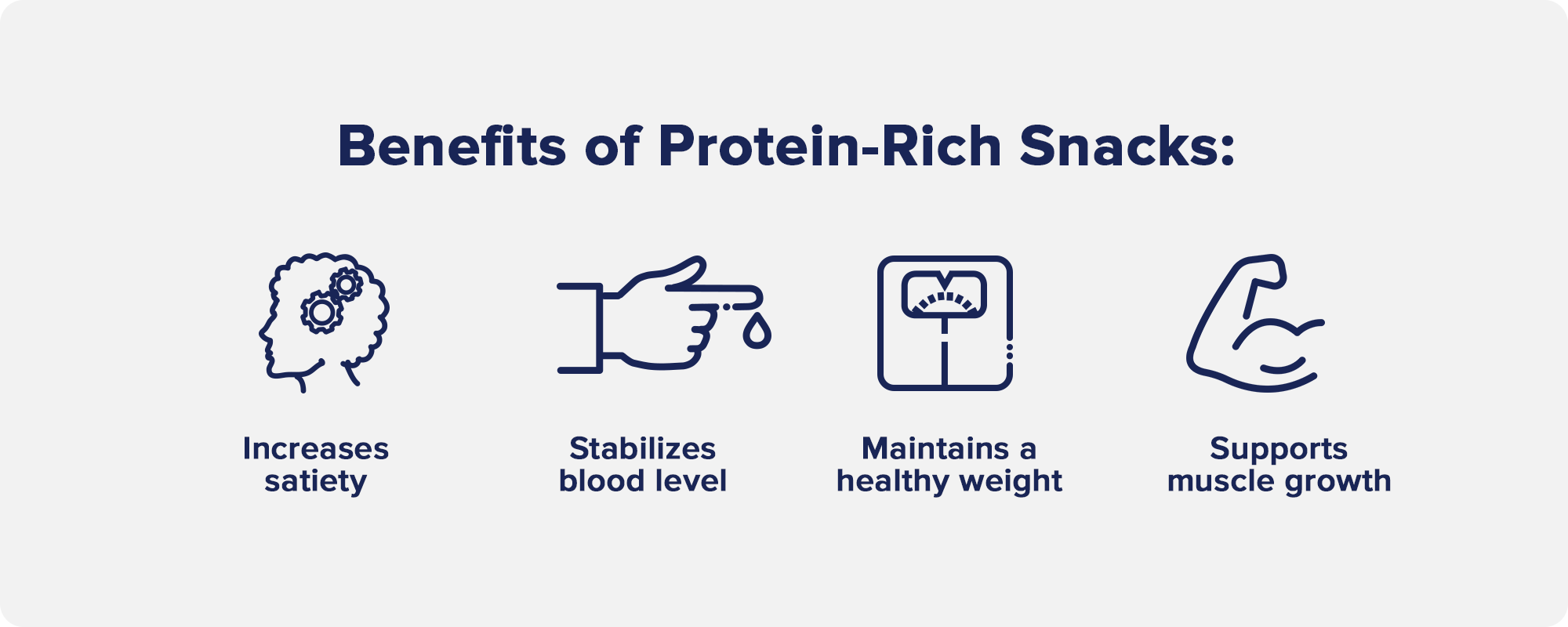
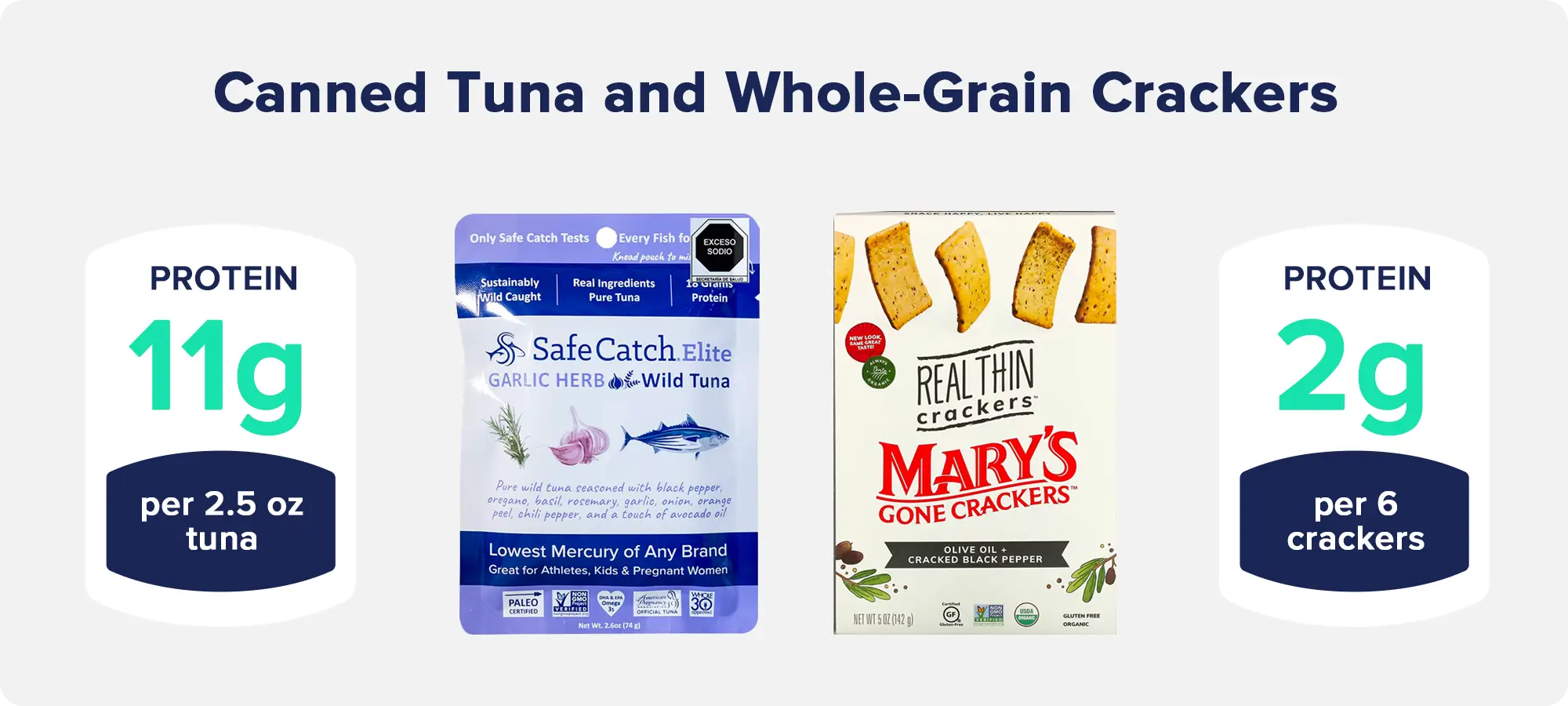
Protein:
Tuna is a highly nutritious food packed with protein and healthy omega-3 fats—and canned tuna is both portable and easy to find.
Canned tuna is shelf-stable and can be consumed as is, but many enjoy it mixed with mayonnaise, olive oil, or mustard.
While these additions are certainly acceptable, remember that mayonnaise and olive oil will add calories and fat.
If you’re feeling extra hungry at snacktime, consider eating a whole can of tuna (typically 5oz)—otherwise, split up the can and have the rest for tomorrow’s snack.
Another option is purchasing pre-packaged, single-serve tuna pouches with various seasonings, like this Safe Catch Garlic Herb Wild Tuna Pouch.
For a proper snack time, portion the tuna out onto 5-6 whole-grain crackers—healthy options are Mary’s Gone Crackers or Simple Mills Almond Flour Crackers for a grain-free option.
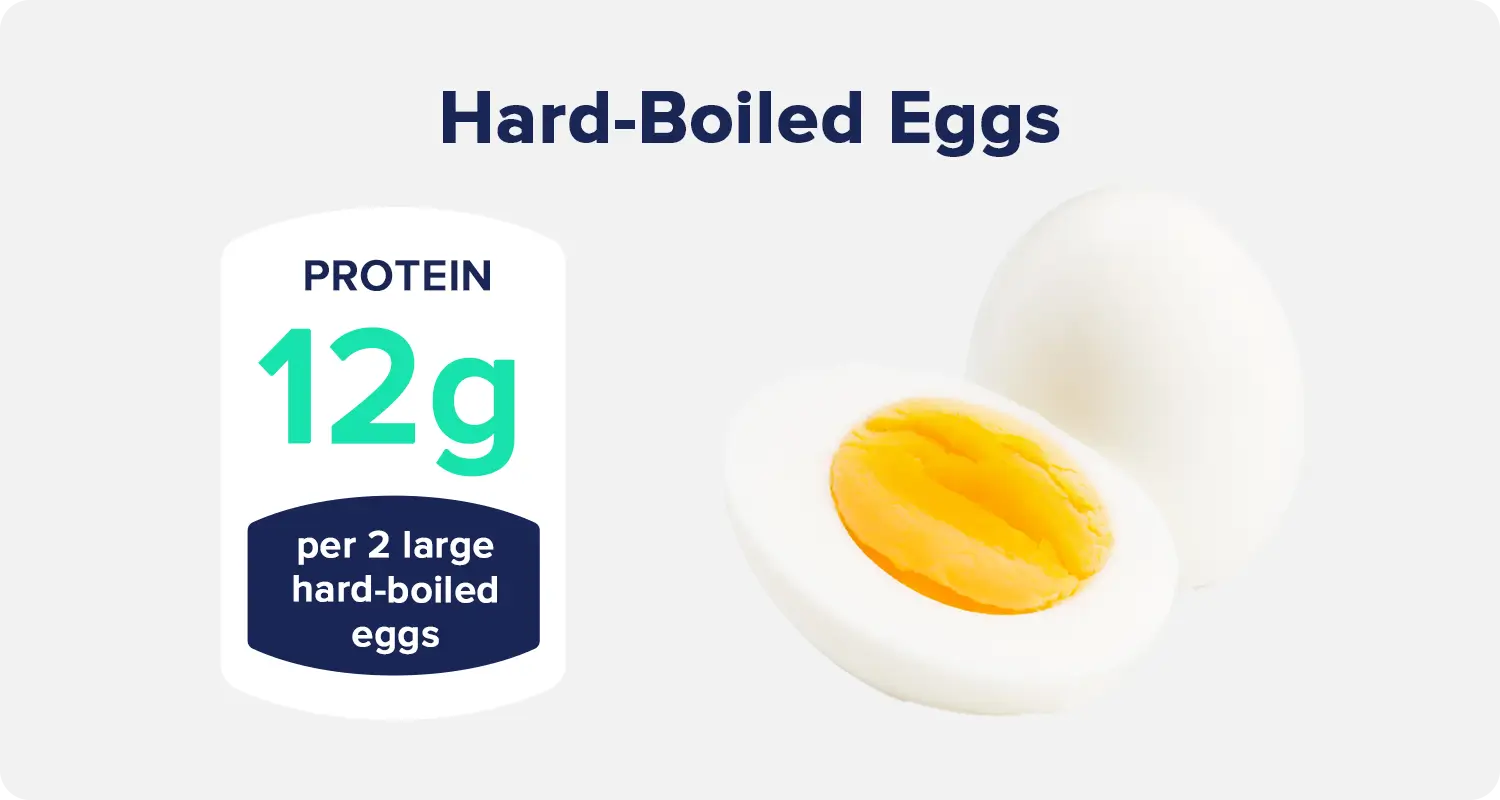
Protein: 12g per 2 large hard-boiled eggs
Eggs are a perfect little package of protein, healthy fats, and nutrients—and hard-boiling them makes for the ideal high-protein snack to take on the go or pack in your lunch box.
While most of the protein is in the whites, don’t skip the yolks, as they contain healthy fats, vitamin D, B vitamins, and choline.
You can certainly eat hard-boiled eggs plain, but many people prefer to add salt and pepper, a splash of soy sauce, or a dash of hot sauce.
Plus, many grocery stores sell pre-cooked hard-boiled eggs to make snack time even more effortless.
But with just 6g of protein per egg, we’d recommend eating two (or more) to ensure your snack is adequately satiating.
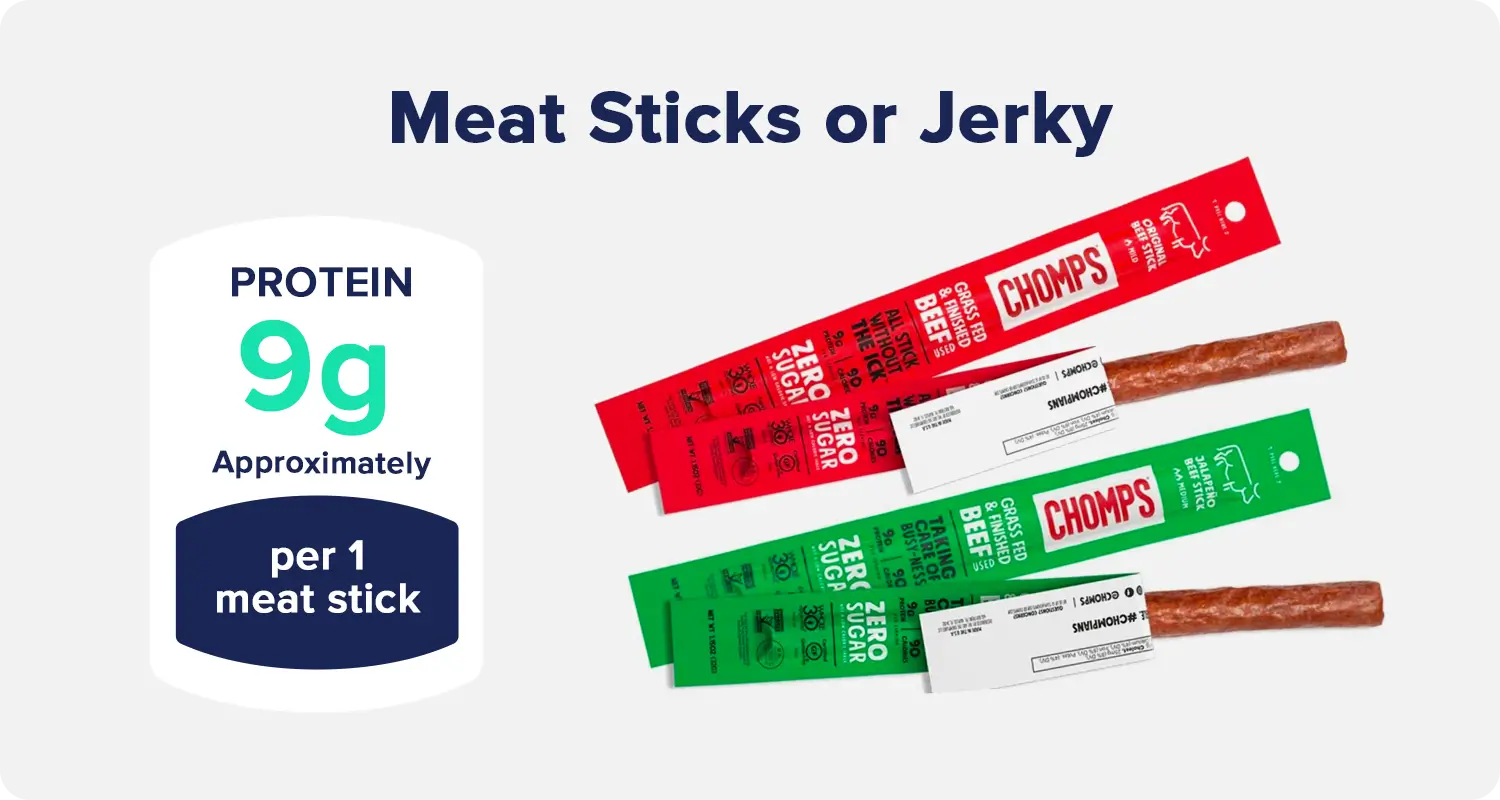
Protein: Approximately 9g per 1 meat stick
Gone are the days of gas station Slim Jims—there are now plenty of grass-fed, pasture-raised, or organic meat sticks and jerky to choose from.
While all jerky and meat sticks will be high in protein, try to choose ones with minimal (or zero) added sugar and lower sodium.
Healthy options that use ethically-raised meat include Chomps, EPIC, and Paleovalley, with various flavors and types of meat, ranging from beef to chicken to venison.
As meat sticks and jerky do not require refrigeration, these are perfect for stashing in your car, purse, gym bag, or office desk drawer when hunger strikes.
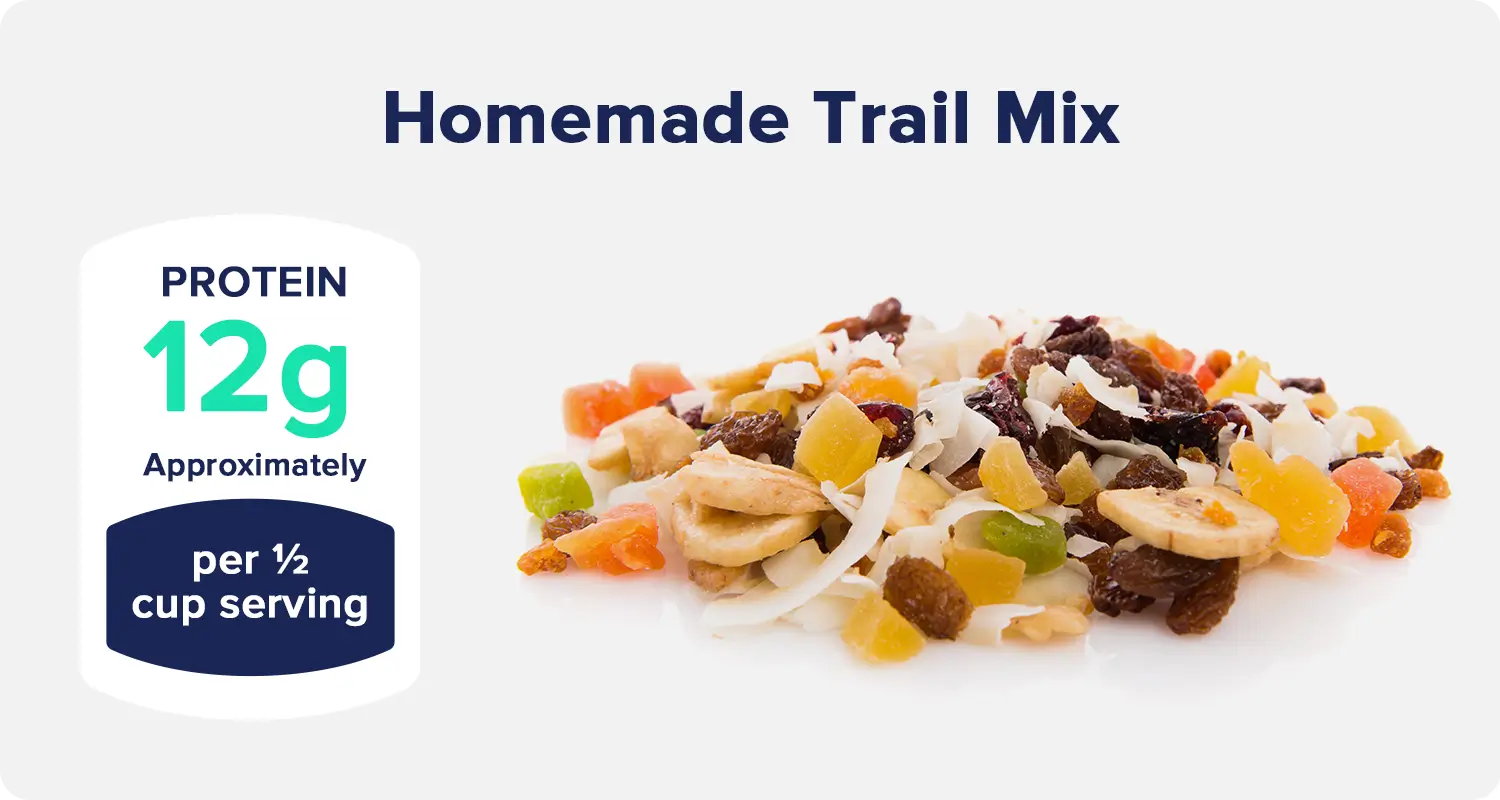
Protein: Approximately 12g per ½ cup serving
Store-bought trail mix can sometimes be on the unhealthy side, especially when the ratio skews to favor dried fruit and chocolate chips.
A healthier trail mix will utilize more nuts and seeds as the base, adding just a sprinkle of sugary ingredients.
A bonus of making your own trail mix is that you can include everything you like—and skip what you don’t.
You can also increase the protein content of trail mix by adding more peanuts, pistachios, and almonds—three of the highest-protein nuts—with high-protein seeds, like pumpkin, sunflower, and flax seed clusters.
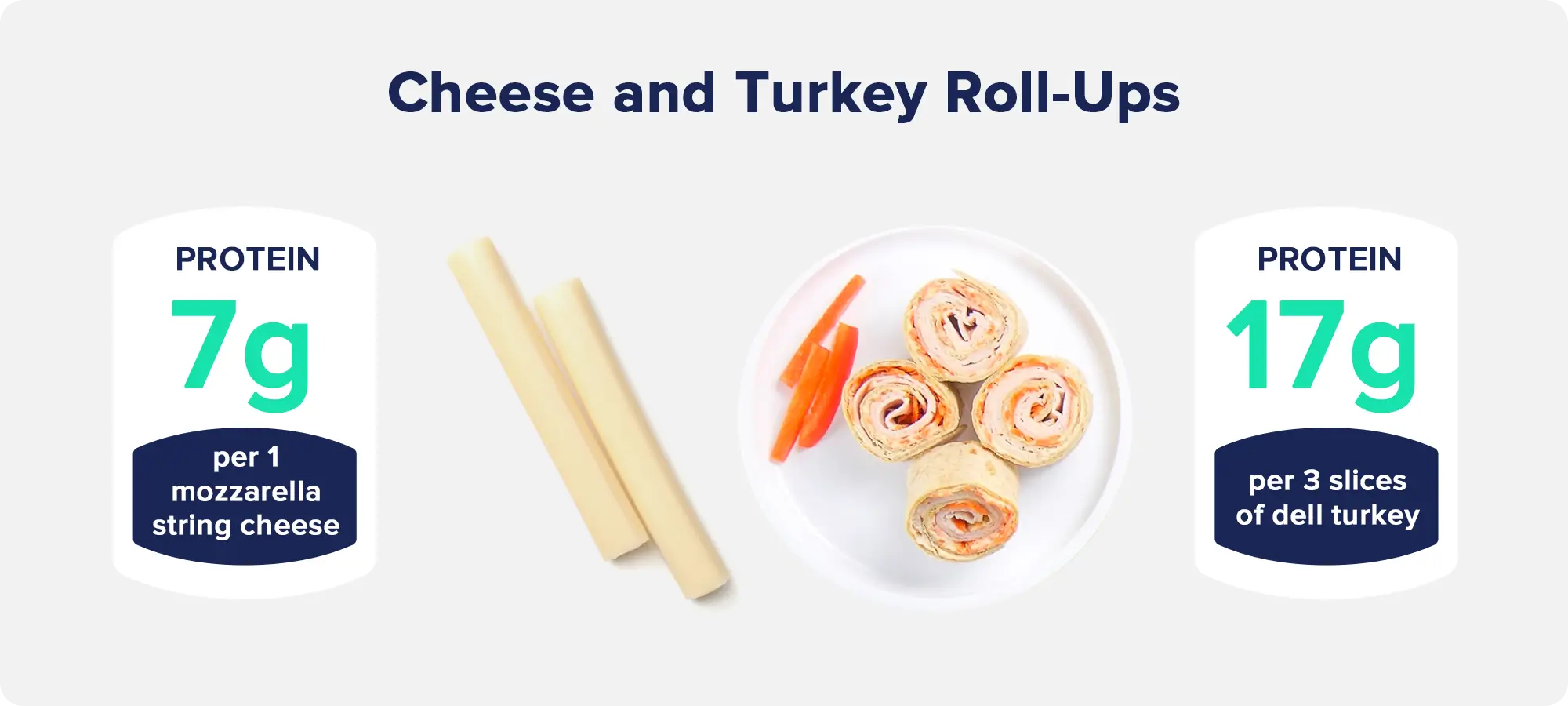
Protein:
A popular snack in the keto crowd, turkey-and-cheese roll-ups are an easy-to-make snack loved by people of all ages.
Rather than rolling the cheese and turkey inside a tortilla, this version uses the sliced deli turkey to wrap around the cheese.
Two roll-ups can be prepared by wrapping a slice or two of turkey around a mozzarella string cheese (split in half), but it can also be done by gently rolling the turkey around a thinner slice of cheese.
Turkey and cheese are both high in protein, making for a satisfying snack.
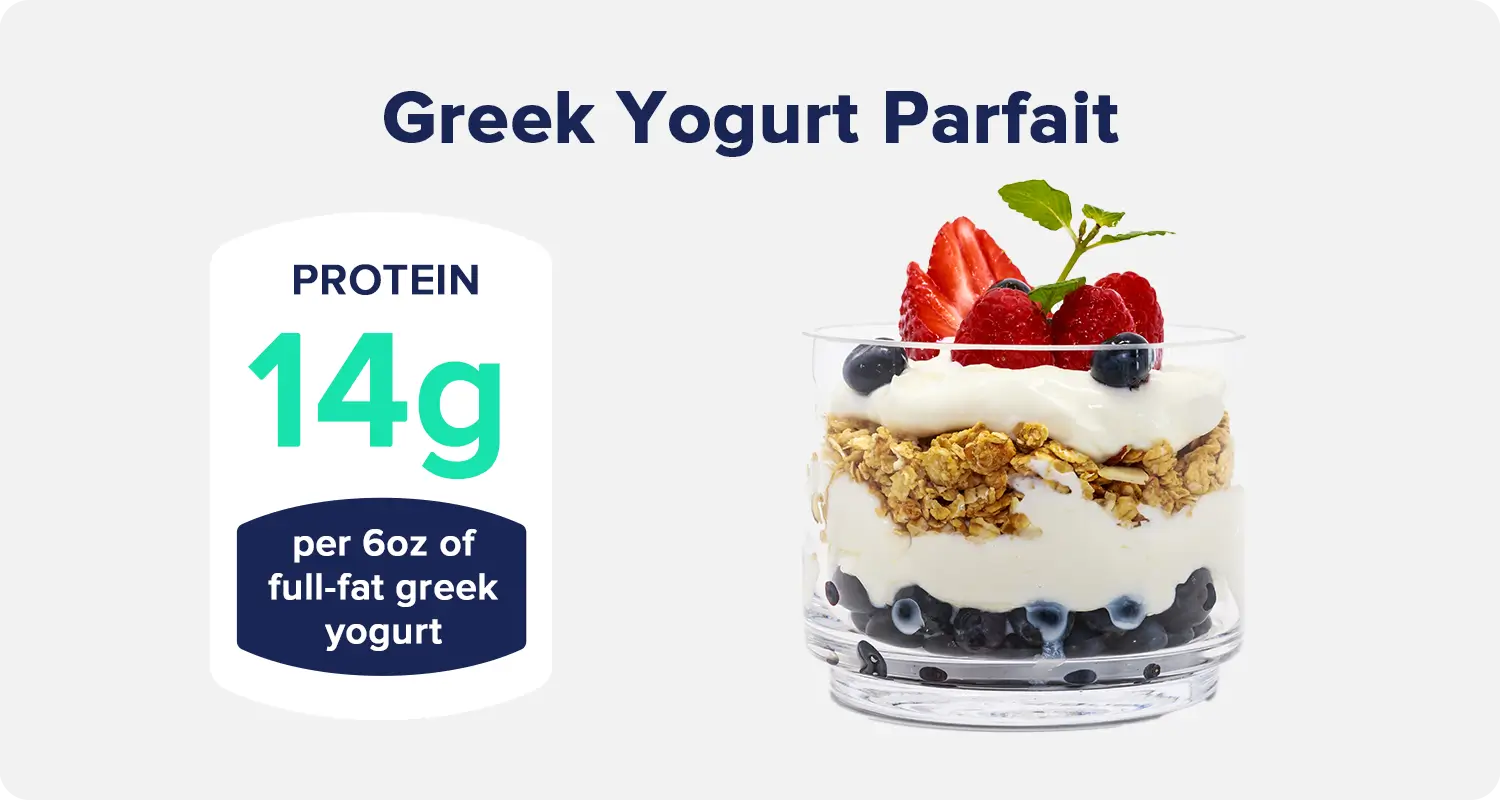
Protein: 14g per 6oz of full-fat Greek yogurt
Greek yogurt is extremely high in protein per ounce, but the fat level will vary—if you want a more filling snack, opt for full-fat Greek yogurt, but if you’d like to keep the calorie count lower, you can choose non-fat.
Greek yogurt is also an excellent source of calcium and contains probiotics that benefit the gut microbiome.
Keep in mind that choosing unflavored Greek yogurt will keep the sugar levels of this snack low.
Mixing Greek yogurt with berries is a great way to boost your snack’s fiber and antioxidant content, with blueberries and raspberries being some of the lowest-sugar options.
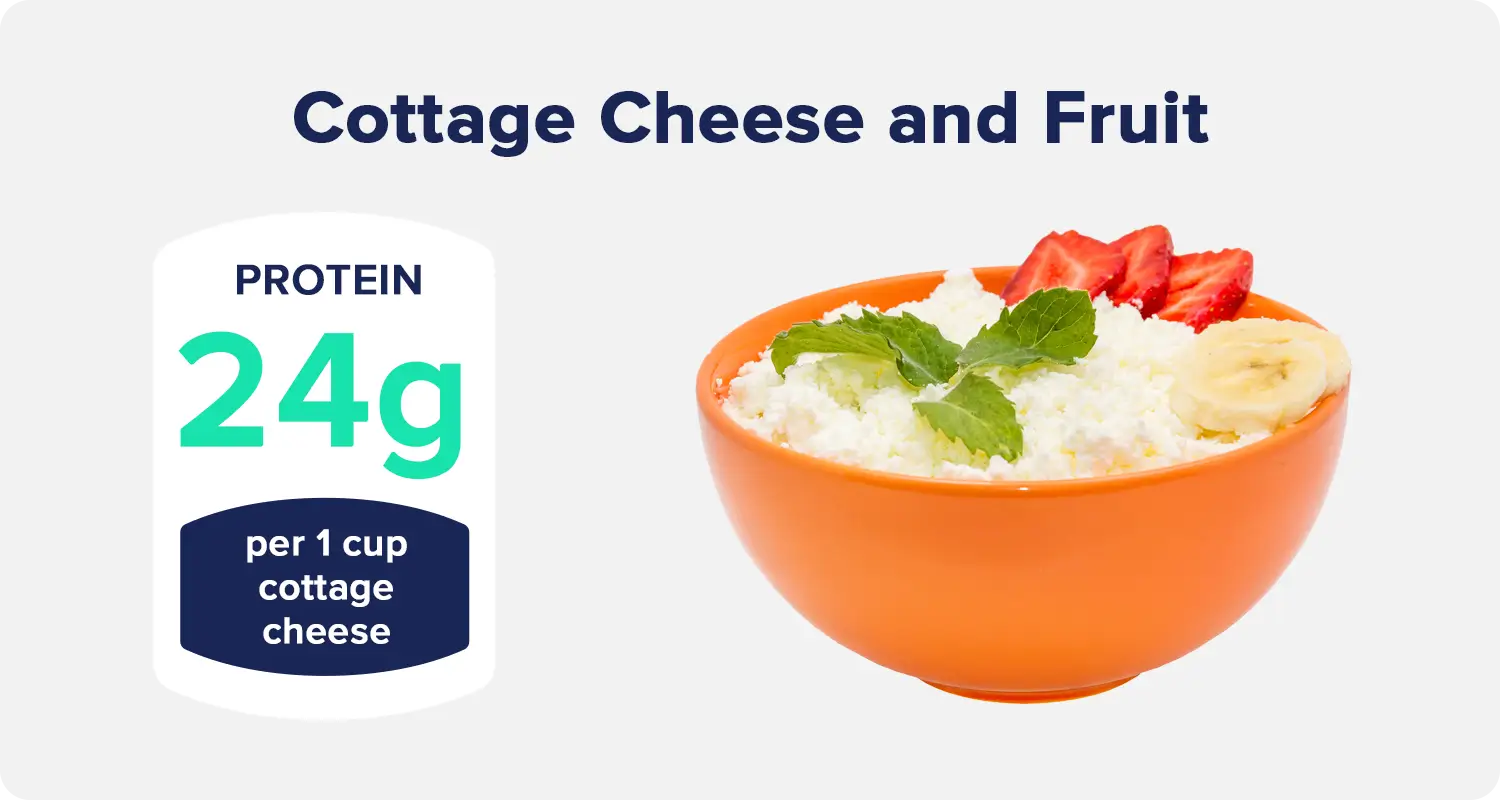
Protein: 24g per 1 cup cottage cheese
Like Greek yogurt, cottage cheese is loaded with protein—24 grams in just one cup—and bone-building calcium in a low-calorie package.
Although many people don’t enjoy the texture of cottage cheese, adding fruit can boost its likeability—and its antioxidant and fiber content.
While any fruit can be added to cottage cheese, the flavors of tropical fruits like pineapple and papaya pair particularly well.
However, compared to berries, tropical fruits are much higher in sugar—therefore, their portion sizes should ideally be limited to half a cup at a time.
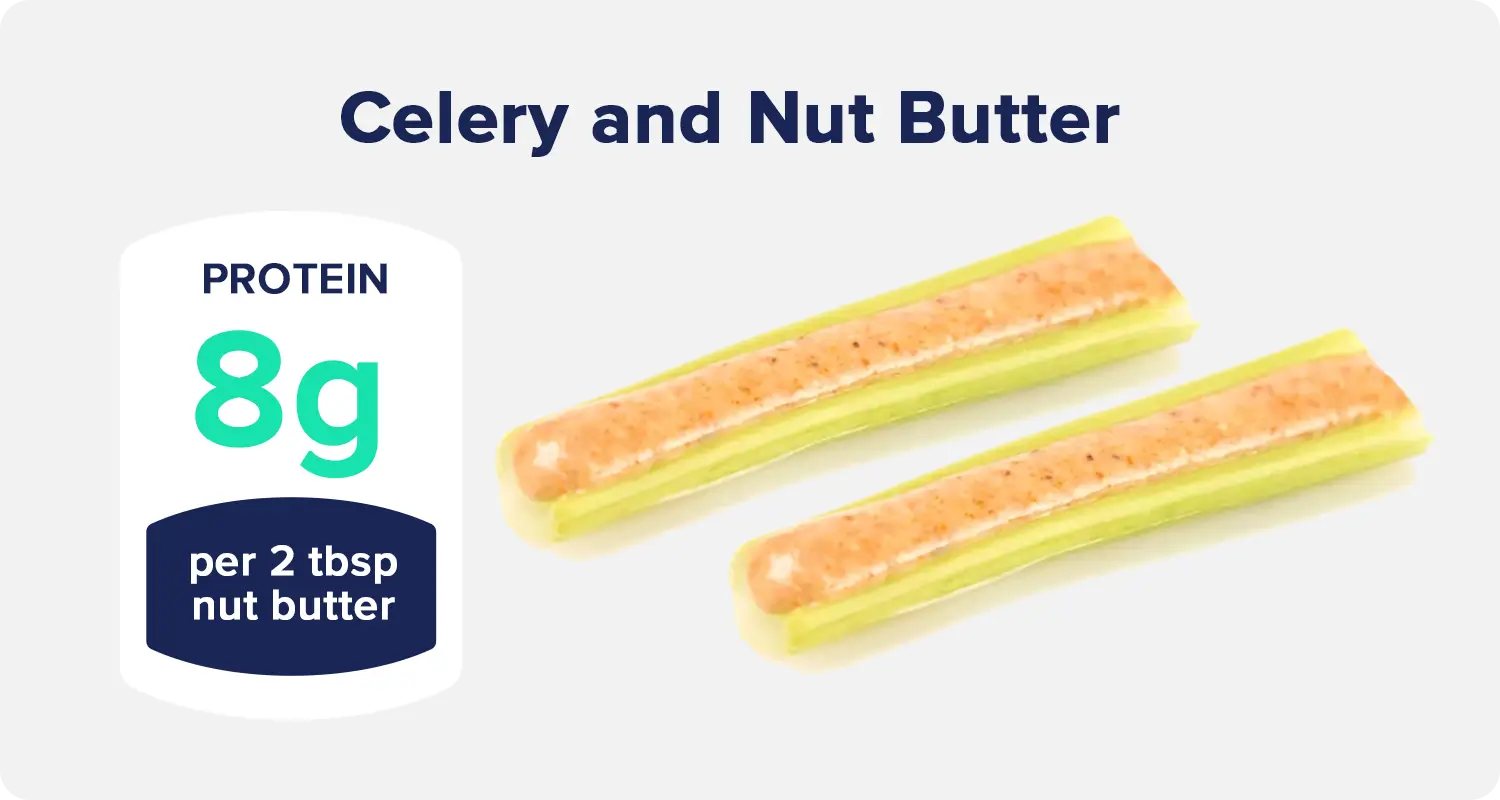
Protein: 8g per 2 tbsp nut butter
A classic after-school combination, celery and peanut butter is a great way to get plant-based protein, plus antioxidants and fiber from the celery.
Although peanut butter is a typical celery topper, other nut butters like cashew, macadamia, or almond butter are also great options.
If you’re allergic to nuts, try dipping celery in tahini, which is made of sesame seeds.
Keep in mind that all nut butters are calorie-dense—and are incredibly easy to eat a lot of—so aiming for a two-tablespoon serving is ideal.
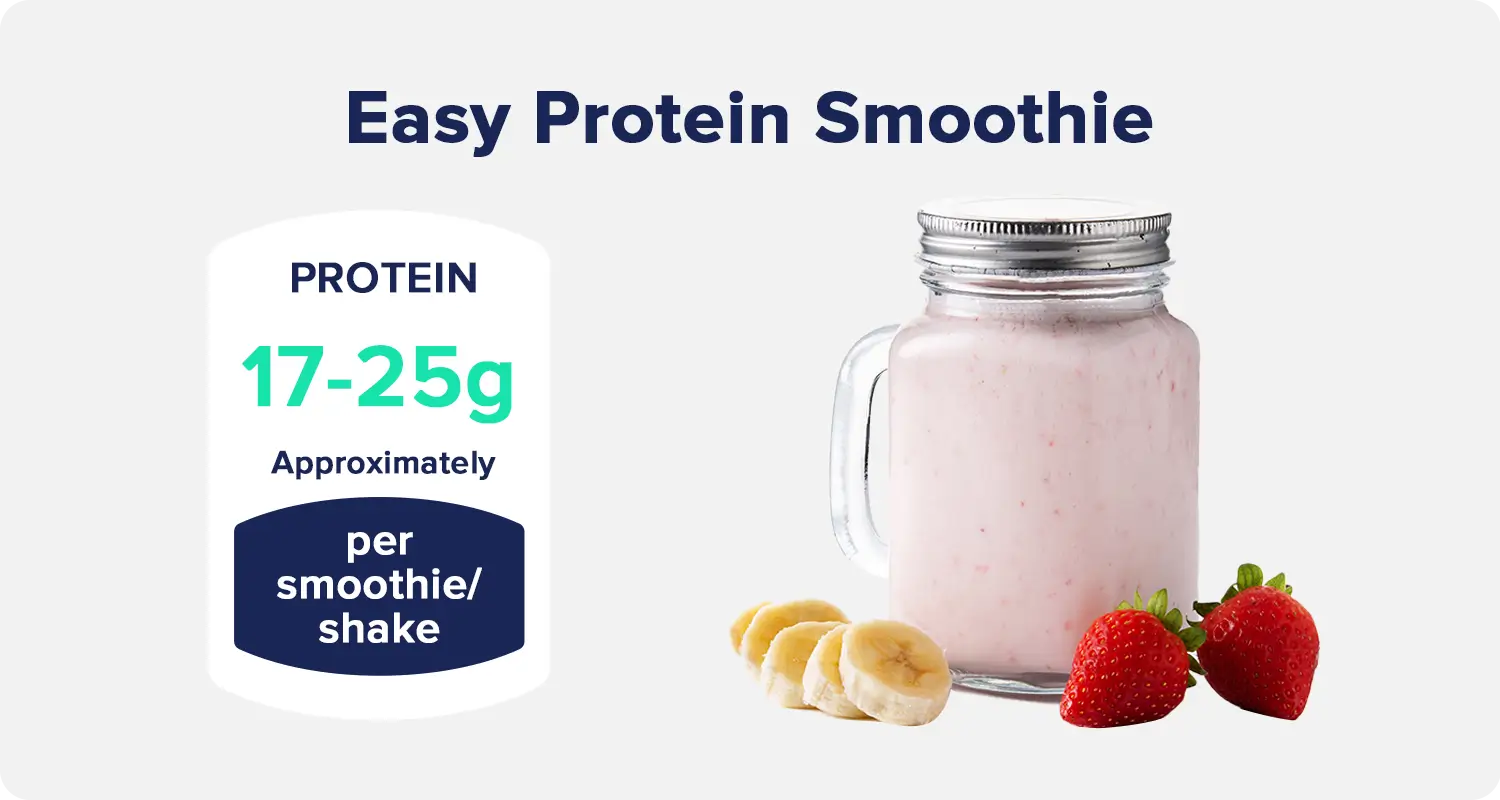
Protein: Approximately 17-25g per smoothie/shake
Although this snack requires a bit more preparation than the others, protein shakes or smoothies can be surprisingly quick to make and don’t require many ingredients.
Healthy protein smoothies typically contain a protein powder, milk of your choice, and a small amount of fruit.
You can also add spinach or kale to make it a green smoothie or put in a spoonful of nut butter to make it more creamy.
Plus, if you don’t have or would rather not add protein powder, feel free to use a high-protein addition like Greek yogurt.
Here is a simple recipe for a healthy protein smoothie snack, but feel free to modify it to your preferences:
If you want to make things even easier, simply shake up one scoop of protein powder with water or a milk of your choice.
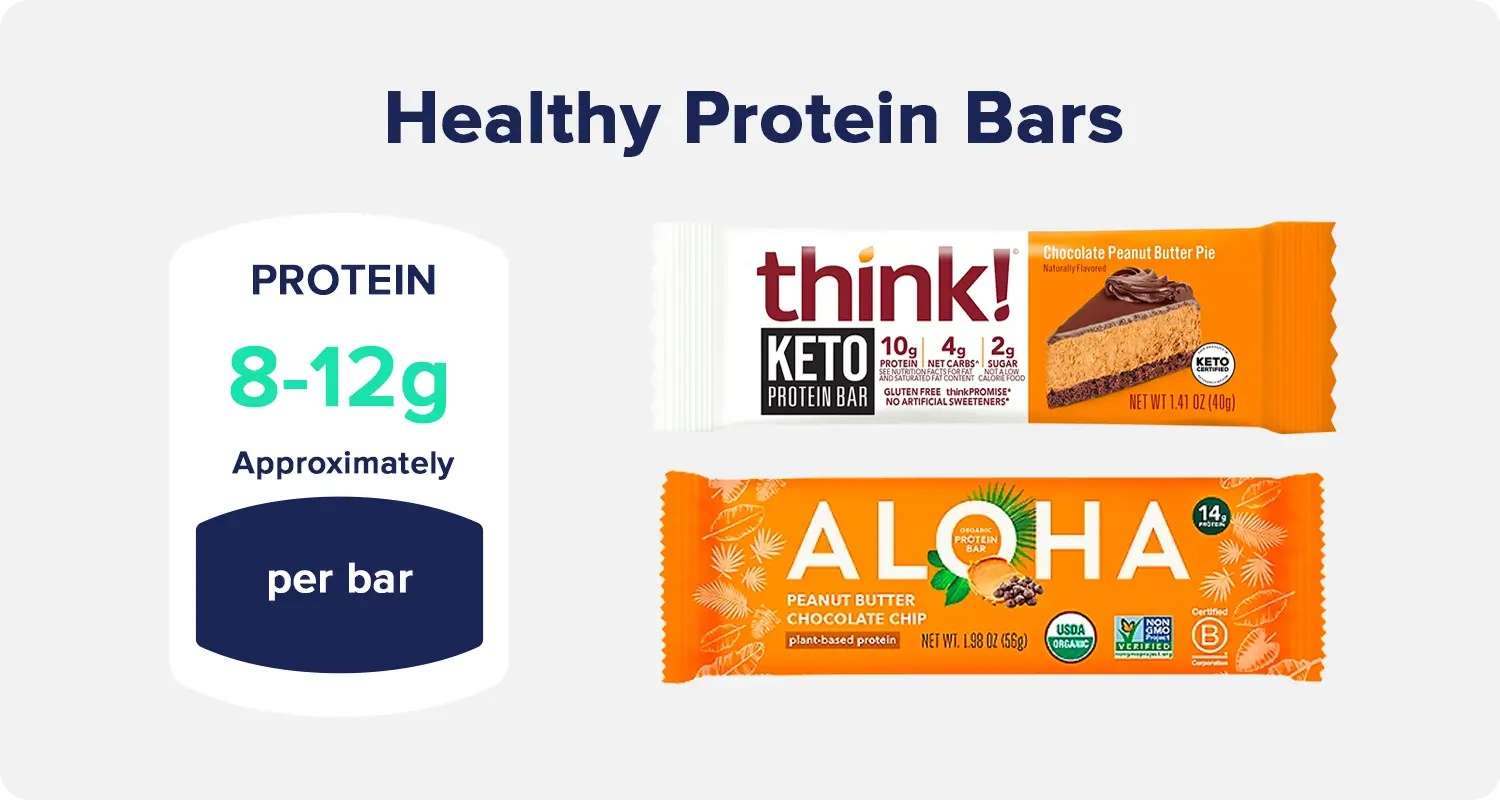
Protein: Varies; Approximately 8-12g per bar
As one of the easiest snacks on this list, protein bars are perfect to grab and go or keep stashed in your car.
But not all protein bars are created equal—many have loads of added sugar or artificial ingredients.
Three of our favorites are RX Bar, ALOHA Bar, and think! Keto Protein Bars.
For a list of our top vegan protein bar recommendations, check out this article.
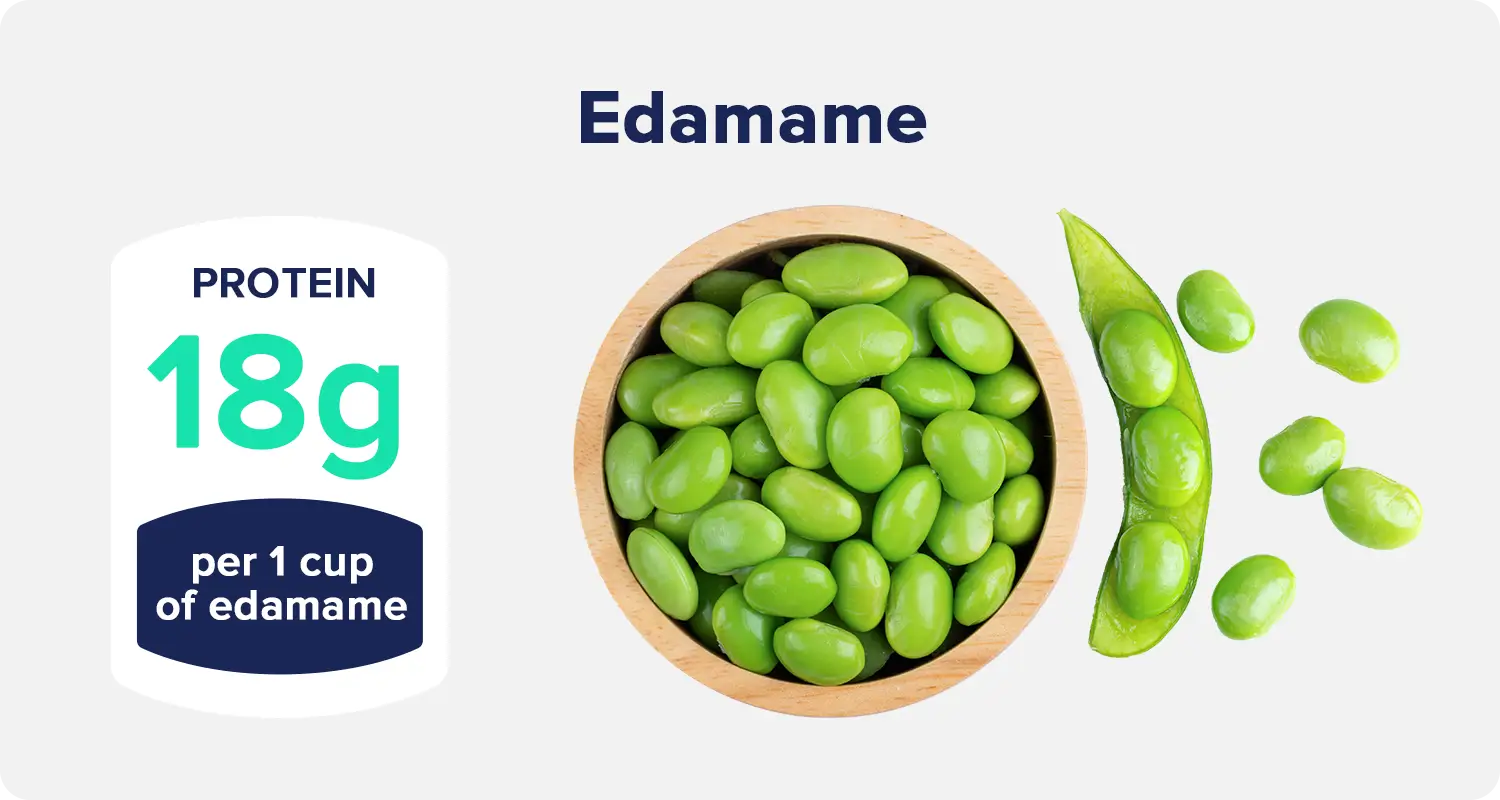
Protein: 18g per 1 cup of edamame
Popularized as an appetizer at Japanese restaurants, edamame are young soybeans that you pop out of their shells to eat.
Edamame is a rich source of plant-based protein and they are considered the least-processed form of soy.
In addition to containing 18g of protein per cup, edamame is also a great source of iron and is loaded with 8g of fiber.
You can buy refrigerated or frozen bags of edamame in most grocery stores—simply microwave them or boil them and then pop them out of the shell with your teeth or hands.
For additional flavor, many people enjoy sprinkling them with salt or dipping them in soy sauce.
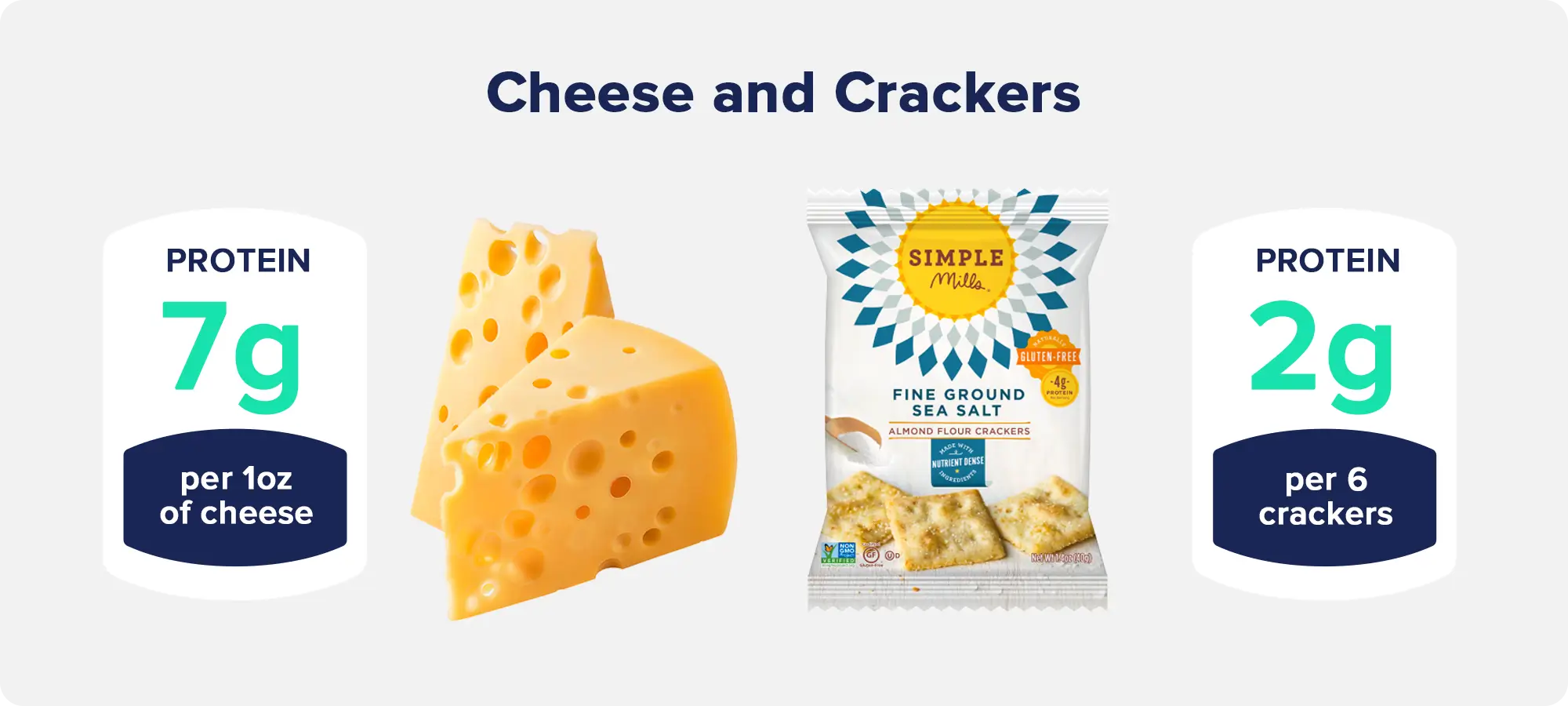
Protein:
Another classic after-school plate, cheese and crackers can be a healthy snack for adults, too.
Each 1oz serving of cheese—typically one slice or about the size of a lipstick tube—contains about 7g of protein.
For a more satiating snacktime, try a mixture of cheeses, mustards, and crackers.
Healthy crackers are another way to get some protein in, like Mary’s Gone Crackers or Simple Mills Almond Flour Crackers for a grain-free option.
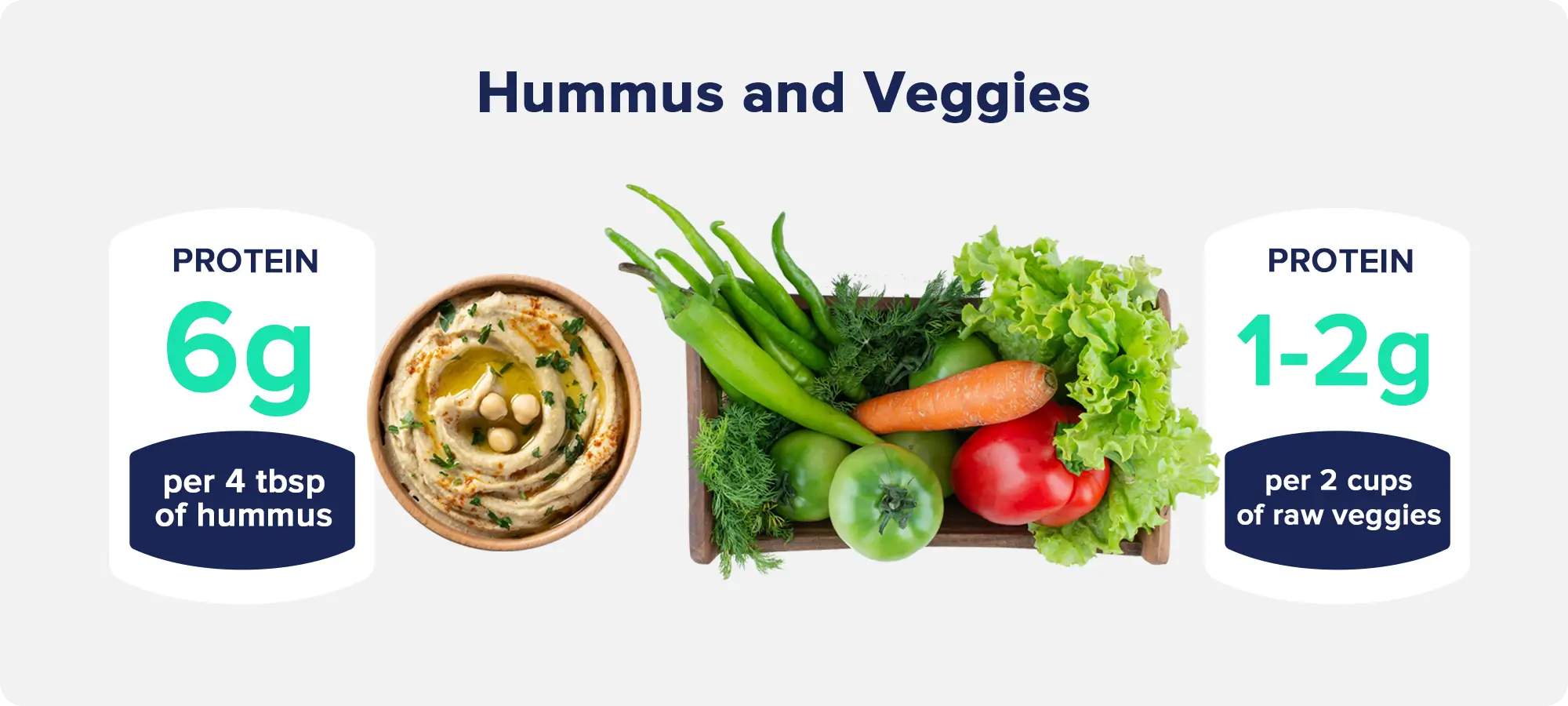
Protein:
Hummus is a spread or dip commonly consumed in Mediterranean and Middle Eastern cuisine.
This hearty dip is made from chickpeas (garbanzo beans), tahini (sesame seed paste), olive oil, garlic, and herbs or spices—and it’s rich in fiber, healthy fats, vitamins, minerals, and protein.
Pair 2 tablespoons of hummus with 1-2 cups of sliced cucumbers, baby carrots or carrot sticks, sliced bell pepper, or sliced radishes into your hummus.
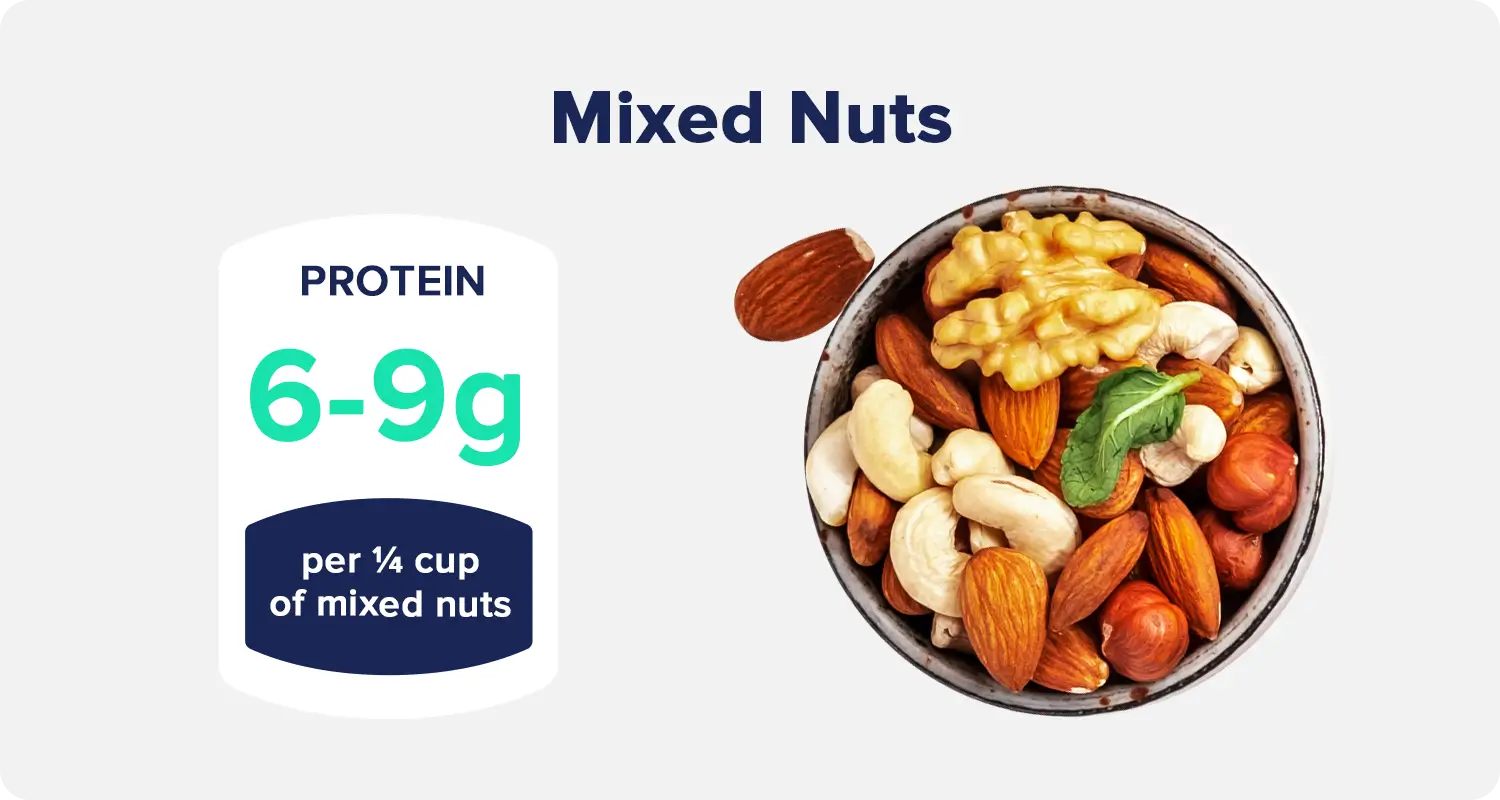
Protein: 6-9g of protein per ¼ cup of mixed nuts
Nuts are nutritious foods to add to your daily snack routine, as they are loaded with plant-based protein, fiber, vitamin E, selenium, magnesium, and monounsaturated fat.
The highest-protein nuts are peanuts, pistachios, and almonds—but you can also add cashews, pecans, walnuts, macadamia nuts, and Brazil nuts.
Although nuts are high in calories and fat, research has found that moderate nut consumption can increase satiety, lower inflammation, and reduce the risk of chronic diseases like cardiovascular disease and obesity.
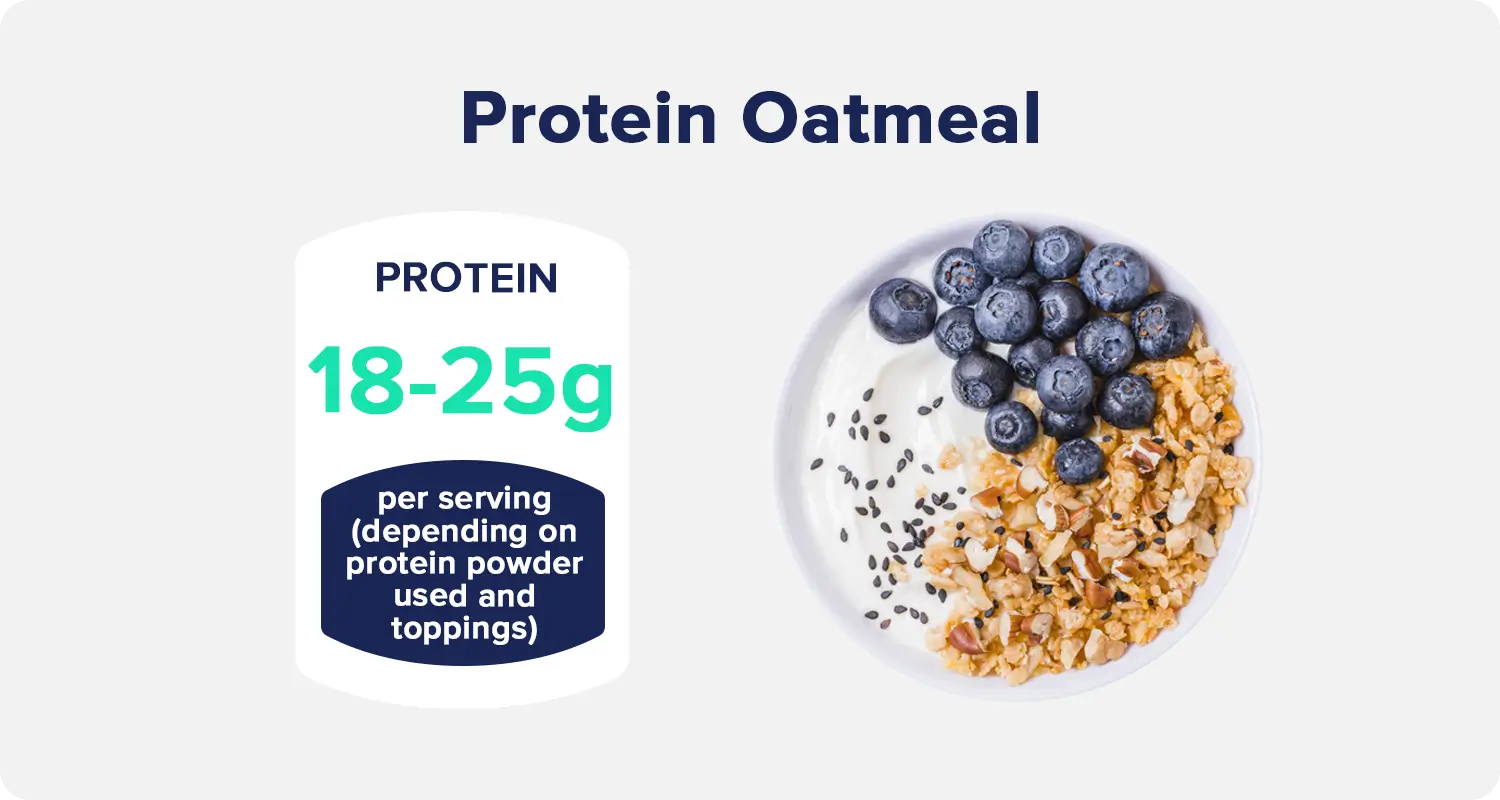
Protein: 18-25g per serving (depending on protein powder used and toppings)
Referred to by people in the know as “proats,” protein oatmeal typically involves adding protein powder to your oatmeal.
A simple way to make your protein oatmeal is by combining one-half of a cup of oats with unsweetened almond milk—or milk of your choosing—and adding one scoop of protein powder.
To make it more flavorful, add berries, diced apples, peanut or almond butter, or chia seeds for extra protein.
Try eating it warmed or in a chilled “overnight oat” style, which involves mixing the protein powder and oats ahead of time and keeping them in the fridge.
Instead of cooking the oats, overnight oats absorb the liquid over time and soften.
Snacks with meat, like jerky, tuna, and turkey, tend to have the highest protein per ounce.
Snacks with concentrated dairy (like Greek yogurt or cottage cheese) and those with protein powder, like protein oats or protein shakes, also have high amounts.
While there aren’t necessarily “best” protein foods, foods that contain high amounts of protein and nutrients include grass-fed beef, wild-caught seafood, and pasture-raised eggs.
If you don’t consume enough protein, you may experience symptoms like:
● Fatigue
● Weakness
● Hunger and cravings
● Loss of muscle mass
● Brittle nails and hair
● Slow-healing injuries
● Getting sick often
● Edema (swelling and fluid buildup) in serious protein deficiency cases
Protein is good for snacks because it is satiating, making you feel more full and satisfied.
It also helps to build muscle mass, recover after exercise, and maintain a healthy weight.
In a review study published in the journal Advances in Nutrition, researchers found that high-protein snack foods have the most potential to increase satiety after meals.
High-protein, high-fiber snacks also caused reduced caloric intake at the next meal compared to when people ate high-fat, high-sugar snacks.